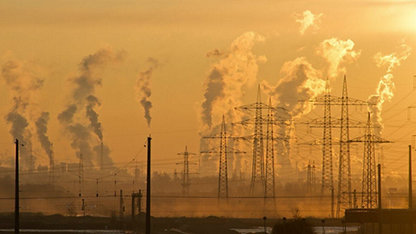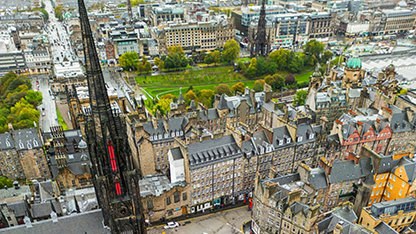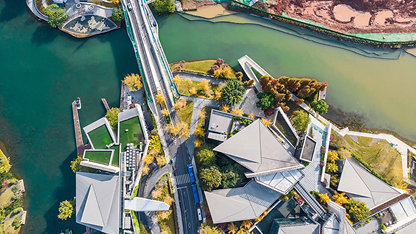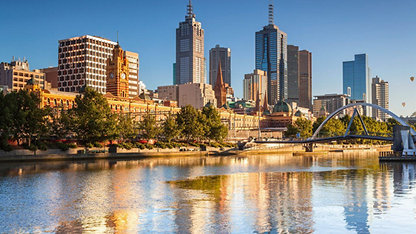This is the Asian century. And it is taking a form that is both encouraging and disheartening.
The continent is essentially under construction and able to shape its own landscape. But the one it has been most successful in forming involves blocks of skyscrapers obscured by smog.
It is an outcome that Asia’s population will refuse to accept. The idea that buildings should become more environmentally friendly is a given. But the idea that the built environment should be liveable, smart and sustainable poses questions the region is finding hard to answer.
To prosper, there is no dispute that Asia has to urbanise and expand. But as the continent moves from emerging to developed economies, those in the real estate and construction industries realise they need to make sense of what Asia has already got in terms of its urban environments, and decide where to go from here.
“Sustainability in an urban context means a city that works well for its citizens in the present, without causing problems for them and the rest of the world in the future,” says William Taam MRICS, executive director of Asia operations at Arcadis. Taam outlines some of the prerequisites: transport systems that enable people to navigate the city quickly and affordably; a clean water supply; strong social structures; institutions that are predictable and effective; good public health; a well-educated workforce; and an environment that is conducive to strong economic performance.
“Sustainability in an urban context means a city that works well for its citizens in the present, without causing problems for them and the rest of the world in the future. ”
William Taam
Arcadis
It is worth noting that economic performance comes at the end of this list. For Taam, terms like smart, liveable and sustainable are merging when looking at modern urban planning. It is an issue highlighted in Arcadis’ first Sustainable Cities Index, which rates 50 of the world’s most prominent cities. Here, the headline ranking is divided into three subcategories: People, Planet and Profit, which correspond to social, environmental and economic sustainability.
The quest is to find the perfect balance across these three perspectives of sustainability and, according to the report, although cities across the world are performing better for being sustainable for profit and planet, they are failing to sufficiently meet the needs of their people.
Asia provides the starkest divergence. Seoul, Hong Kong and Singapore perform well enough to make the top 10. However, the least-sustainable cities include some of the fastest-growing metropolises on the Asian continent: Jakarta, Manila, Mumbai, Wuhan and New Delhi. These fall short on aspects such as sprawl and pollution, the result of old and heavy industries.
What can Asia learn as it attempts to develop truly liveable cities? The challenges are extremely diverse. Yes, the pressure on cities such as Shanghai will be immense as its population surges by 54% to 30 million by 2030. But Japan, for example, may be the harbinger of a necessary but counterintuitive approach to urban planning. It is the first nation to face a wholesale decline in the population of its smaller cities and towns. Government data predicts that, in the years through to 2050, more than 60% of Japan’s inhabited areas will lose at least half of their population, and 20% will become uninhabited.
To that end, Japan’s lands and infrastructure ministry has developed its “Grand Design 2050”. This focuses on encouraging compact cities with improved networks. In essence, the plan aims to shrink the gap between regional cities that must start to share services and resources.
“Regional cities are dying off,” says Jon-Paul Toppino, the Singapore-based managing partner of PAG Real Estate, about the 2050 scheme. “But I do feel the next 20 years for Japan will not be as bad as people think.” He points to the country’s world-leading spending in research and development per capita as signs that its cities will work more intelligently at the highest-end of the value chain.
In the Arcadis ranking, Seoul scores highly in the people category, the area that has, to date, drawn the least attention from futurists and city governments. Good health and the second-best transportation network in the world make it highly liveable.
In another report, devoted just to nations that border the Pacific, the Asia Pacific Economic Cooperation (APEC) commissioned PwC to put together Building Better Cities: Competitive, sustainable and liveable metropolises to look at what works, and what does not, in 28 cities across the region.
Again, there is a clear pattern of the most-developed nations producing the most-sustainable cities. Toronto and Vancouver rule the roost, while Singapore and Tokyo – the two best-planned cities in Asia – are placed next. Auckland and Melbourne also fare well – arguably, New Zealand and Australia lead the world in green planning and sustainable building and in city development. Again, sprawling Seoul also scores high, with Osaka ranking above Hong Kong – a relatively lowly 11th place for a city frequently depicted as a model of the highly dense, vertical pocket city of the future.
Hong Kong fared particularly badly in terms of its wealth gap, its “GINI rankings” showing that one million residents, or one in five, live in poverty – mainly as a result of high real estate costs. The APEC report claims that greater income equitability actually boosts economic growth. This would be a lesson well learned by economies such as Malaysia, Taiwan and Thailand, which are in the middle of the pack in terms of their urban development. They have an urgent need to adapt. Bangkok, Manila and Jakarta are already snarled with traffic and are seemingly endless in their expansion.
The smart money is now starting to take note. “The way to future-proof our buildings – for the benefit of our investors – is to make sure they are in a sustainable, socially inclusive environment,” comments Chris Taylor, head of private markets at Hermes Investment Management in London. Taylor believes this involves placemaking, looking at the “amenity value” of the location, its infrastructure and the public realm that surrounds it.
The building is not that important. It is the built environment that matters, the community, the connectivity, the sense of space. It may be the time to consider the broader reaches of development both in geographic and temporal terms. Taylor says that only 37% of institutional investors feel pension funds should consider whether their property investments will affect the overall quality of life experienced by beneficiaries when they retire.
Pension funds, with their very long-time horizons, are in prime position to insist that the property investments they back must enhance the location in which they fit. Developers are beginning to heed that call. Grosvenor is putting those concepts to work in its current target markets of Shanghai, Hong Kong and Tokyo, aiming to ensure that any new development in which it engages links that project with its surrounds.
That is a concept lacking, for instance, in Hong Kong’s West Kowloon, where skyscraper condos for the wealthy sit atop huge luxury shopping malls. Entering the Elements Mall above Kowloon Station from street level is almost impossible, a transgression that Grosvenor vows to avoid in its own buildings. “The quality of the urban fabric is one of the biggest subjects for the next generation,” says Ben Cha, CEO of Grosvenor Asia Pacific. “It goes from the grand scale, with connectivity and infrastructure, right down to the building.”
Will Asia’s construction and development industries take a similar view? Most companies currently look only at the bottom line. They are going to need to embrace sustainability in all its forms to drive economic growth and liveability, while retaining a city’s diverse mix and heritage.














